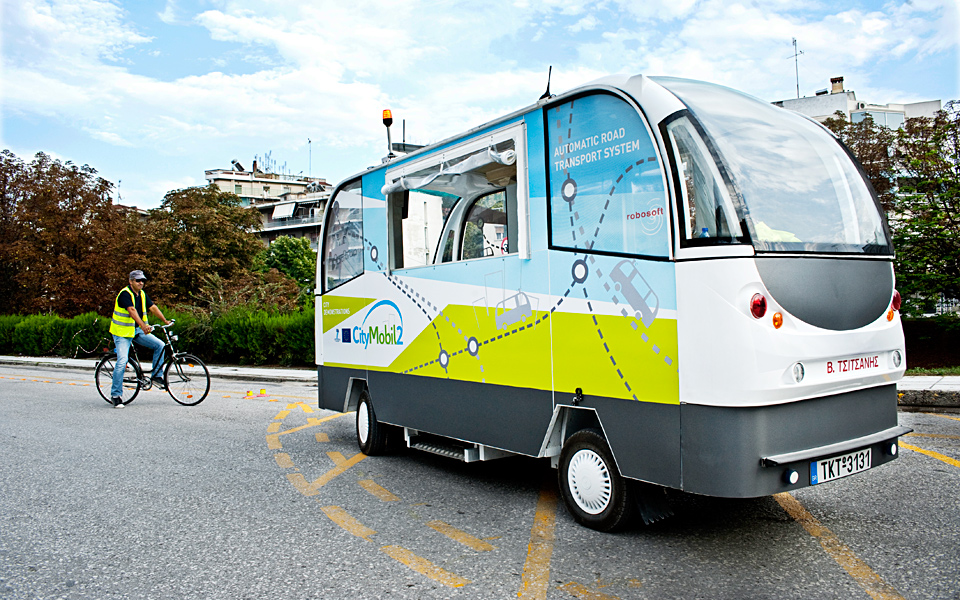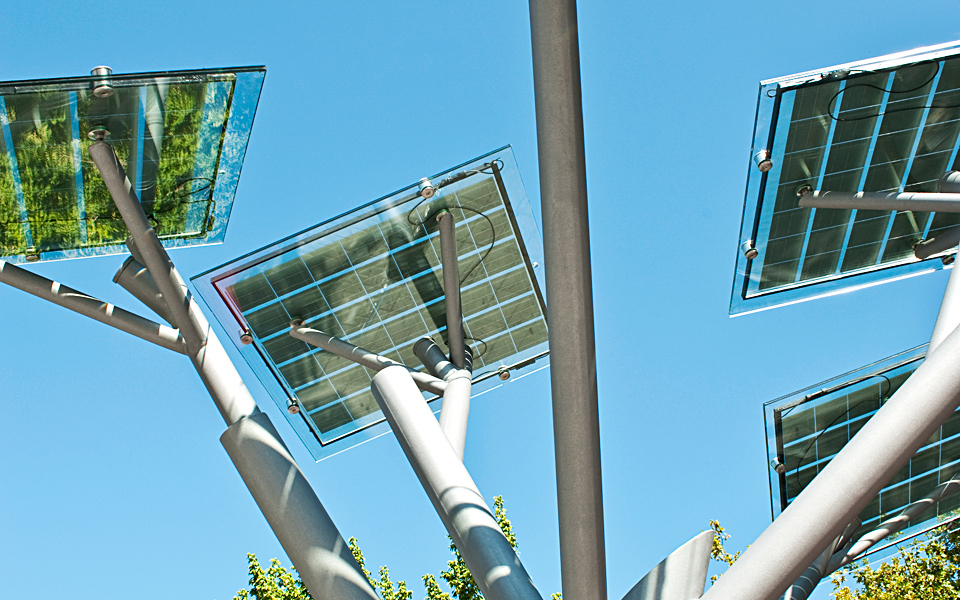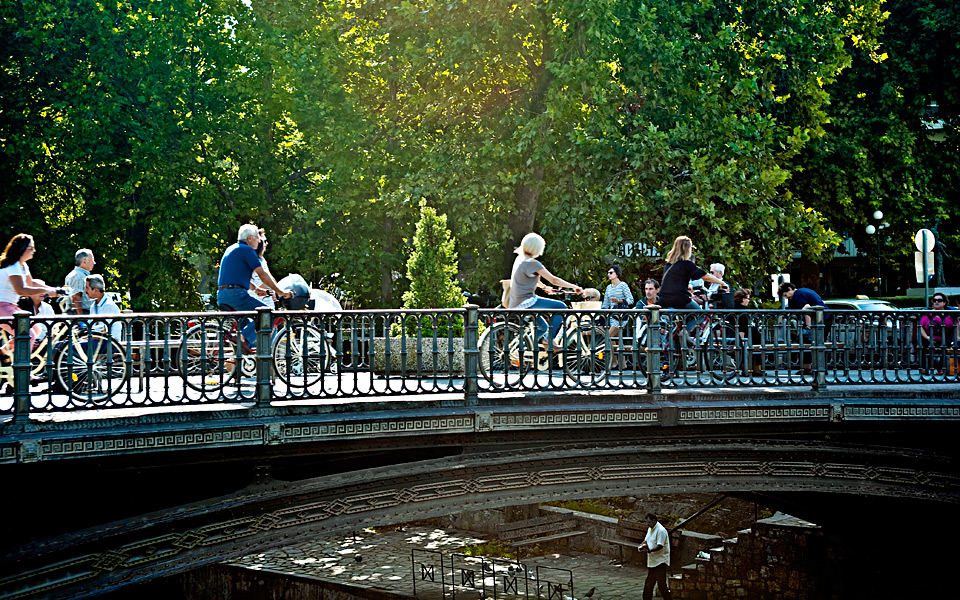The idea for the trip came through a news report. The Municipality of Trikala announced a pilot scheme for a bus without a driver. It was the ideal occasion to get to know up close this small Thessalian city, which has become synonymous with innovation over the past years.
And it’s set to continue with new projects in the pipeline.
The main road leads to Trikala’s beautiful footbridge, built in 1886 by French engineers, connecting the shopping street of Asclepius with the city’s main square.
Under the metal bridge flows the Litheos river, a tributary of the Pinios, which runs throughout the city.
It is said that the ancient physician Asclepius was born on the river’s banks, which are now lined with tall trees and make a terrific spot for taking walks.
The weather is good and the bikes of Trikala parade the streets. The town’s small size and the absence of large slip roads make it ideal for cycling lovers. In early March, a specially constructed circular route of about 2.5k –the largest single bikeway in the country –will open to cyclists. Until recently, it served as a driverless bus route.

A good gamble
The pilot bus scheme was a gamble that paid off for Trikala on many levels: a Greek city became known throughout the world for the implementation of a costly international project, as well as it acquisition of specific know-how and, of course, its powerful fiber optic network.
If the Municipality of Trikala’s free Wi-Fi is currently a bit slow in some parts of the city, with the new network connections, it will be much faster. The know-how to create Wi-Fi networks was developed in Trikala about 10 years ago and it comes as no surprise that they export this knowledge to other municipalities.
We stop in the main square and recharge our mobiles and tablets in a high-tech tree, the branches of which are futuristic solar panels, collecting solar energy to charge electronic devices and motorized wheelchairs. A touch screen at the bottom of the trunk connects to the internet and opens maps of the area.
You can see several recently unearthed architectural findings if you follow Stratigou Sarafi Street, passing near Asklipiou Street. Continue from there to the Byzantine Fortress of Trikala, which affords a view of the valley and the Pindos range. Higher up is the pine grove of the prophet Elijah. The walk down from here passes by the district of Varousi, home to Byzantine churches and restored 17th-19th centuries mansions, which testify to the past glory of the region.
A stroll through celebrated alleys of the Sakaflia district in Varousi is like a trip back in time to the interwar years. The district was immortalized in the lyrics of the famous musician Vasilis Tsitsanis who comes from this region. The route ends up in the old neighborhood of Manavika.

Attik and Venizelos
A vivacious neighborhood, which has seen extensive redevelopment in the mid-90s, this is the heart of the city’s nightlife, and home to one of the first murals painted in Greece, when the neighborhood was renovated in the ‘20s.
Back at the square, we stand for a while in the renovated neoclassical Panellinion hotel, which dates back to 1914 and which, through the years, has hosted many Greek artists. The balcony served as a stage for many politicians to deliver speeches,, including Eleftherios Venizelos.
It’s also worth visiting the imposing Koursoum Tzami or Osman Shah Mosque on the edge of town, which is a UNESCO-protected monument. The size of the well-preserved structure, with a height of 22 meters, is impressive as are the excellent acoustics.
The last stop is the Matsopoulos Mill, which has started operating some of its old machines and will gradually operate permanently as an industrial museum.












